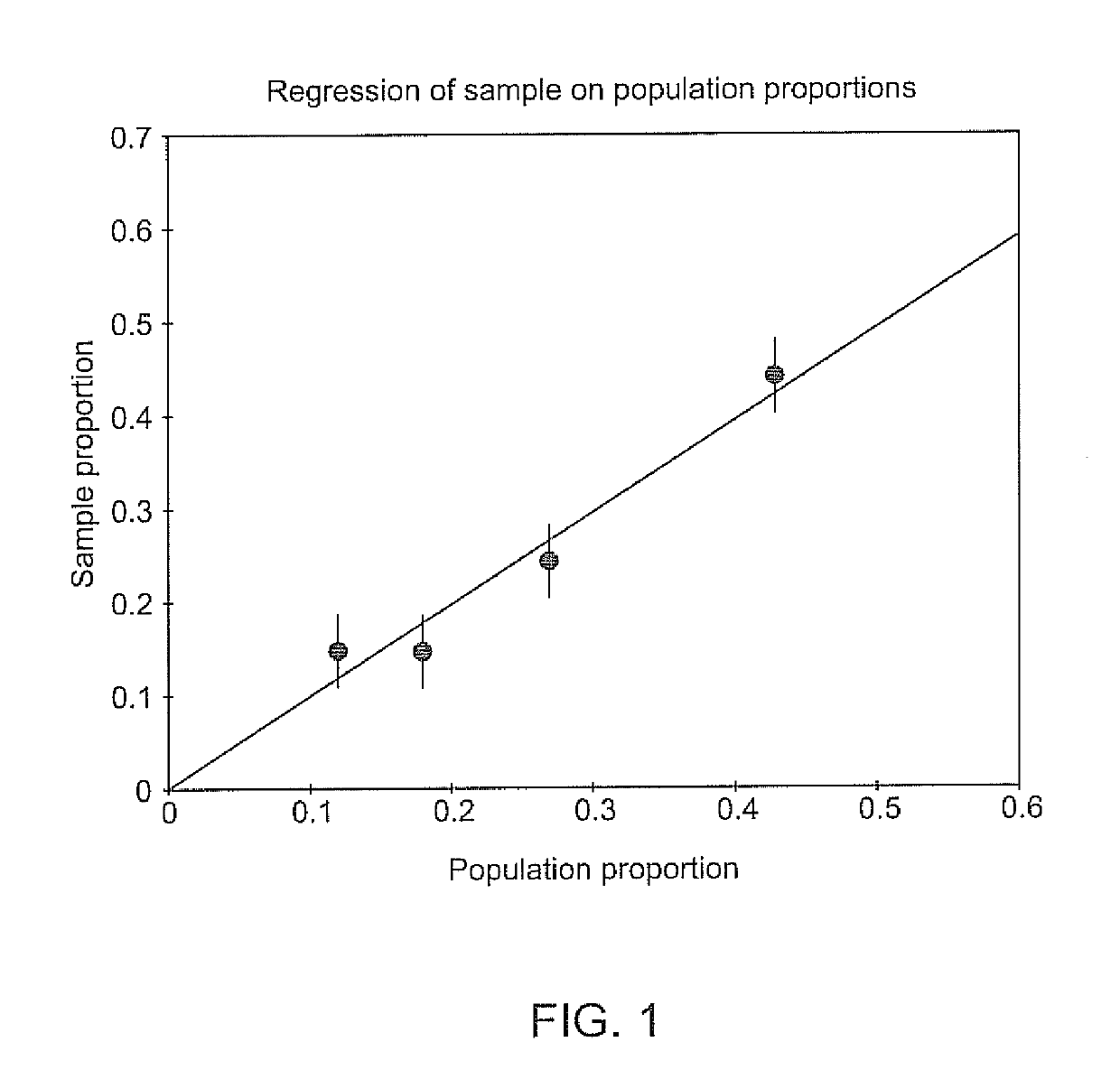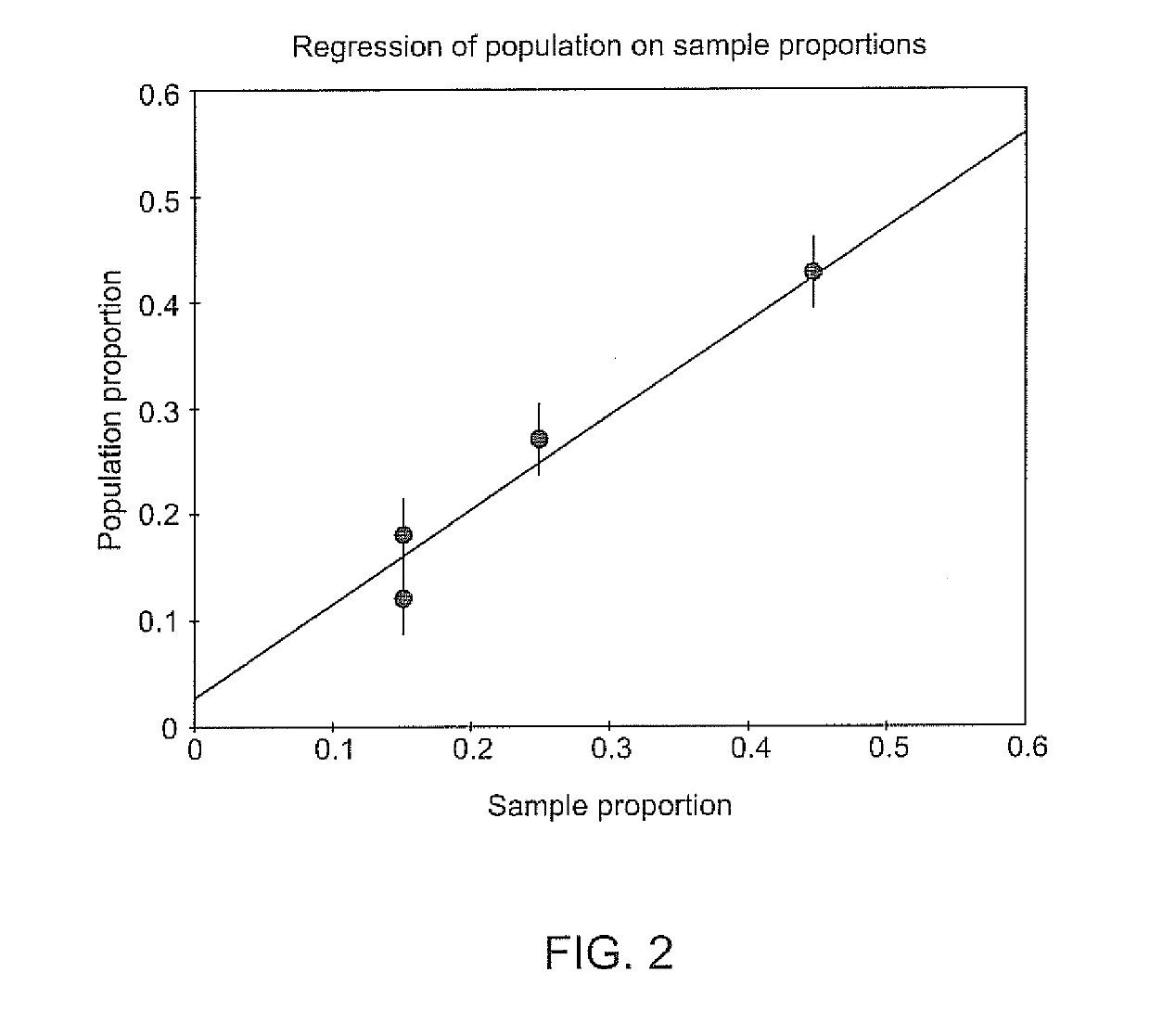Population-sample regression in the estimation of population proportions
a population-sample regression and population proportion technology, applied in the field of population-sample regression in the estimation of population proportions, can solve the problems of unnecessarily limited data-fitting ability of single-parameter model described by equation (1), rapid model may fail to significantly improve model fit, and values may disturb other supporters, so as to improve the estimate of test-taker's ability and difficulty, improve the reliability of a test, and improve the ability of the test-tak
- Summary
- Abstract
- Description
- Claims
- Application Information
AI Technical Summary
Benefits of technology
Problems solved by technology
Method used
Image
Examples
numerical example
[0099]This section describes the use of simulated data to compare the single-parameter model in its traditional Rasch form with the form described here, as well as a number of variations of each. The data consisted of individual item responses (0's and 1's) on 10-, 20-, and 30-item tests, each administered to 1,000 examinees. The θ values were randomly selected from a standard normal distribution. The b values for the 10-item test were −1.5, −0.75, 0, 0.75, and 1.5, each repeated once. These ten values were duplicated in the 20-item test and triplicated in the 30-item test. Items created to have each b value were also created to have either of two values of rxθ. One is the maximum possible value for its difficulty, point-biserial correlations having maximum values less than one, and the other is 0.144, chosen to make the mean rxθ for a test equal to 0.400. Table 1 shows these rxθ values in the third-to-last row.
[0100]Data Creation.
[0101]Using the θ values and item specifications jus...
PUM
 Login to View More
Login to View More Abstract
Description
Claims
Application Information
 Login to View More
Login to View More - R&D
- Intellectual Property
- Life Sciences
- Materials
- Tech Scout
- Unparalleled Data Quality
- Higher Quality Content
- 60% Fewer Hallucinations
Browse by: Latest US Patents, China's latest patents, Technical Efficacy Thesaurus, Application Domain, Technology Topic, Popular Technical Reports.
© 2025 PatSnap. All rights reserved.Legal|Privacy policy|Modern Slavery Act Transparency Statement|Sitemap|About US| Contact US: help@patsnap.com



